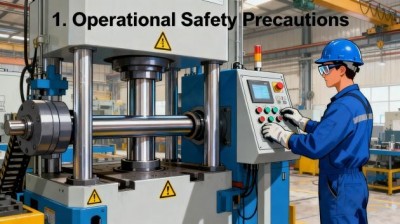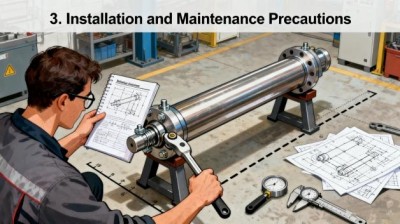- English
- Español
- Português
- русский
- Français
- 日本語
- Deutsch
- tiếng Việt
- Italiano
- Nederlands
- ภาษาไทย
- Polski
- 한국어
- Svenska
- magyar
- Malay
- বাংলা ভাষার
- Dansk
- Suomi
- हिन्दी
- Pilipino
- Türkçe
- Gaeilge
- العربية
- Indonesia
- Norsk
- تمل
- český
- ελληνικά
- український
- Javanese
- فارسی
- தமிழ்
- తెలుగు
- नेपाली
- Burmese
- български
- ລາວ
- Latine
- Қазақша
- Euskal
- Azərbaycan
- Slovenský jazyk
- Македонски
- Lietuvos
- Eesti Keel
- Română
- Slovenski
- मराठी
- Srpski језик
Precautions for operating and using hydraulic cylinders
2025-10-22
Hydraulic cylinders require strict adherence to operational and maintenance precautions to ensure safety and extend service life, with core focuses on pressure control, contamination prevention, and regular inspection.




1. Operational Safety Precautions
Never exceed rated pressure: Operating above the cylinder’s specified maximum pressure will cause seal damage, cylinder deformation, or even catastrophic failure like cylinder barrel rupture.
Avoid overloading: Ensure the load applied to the cylinder does not exceed its rated thrust or pull force, as this can bend the piston rod or damage internal components.
Control movement speed: Prevent sudden starts, stops, or rapid speed changes. Sudden pressure spikes from inertial forces can damage the hydraulic system and the cylinder itself.
No manual interference during operation: Do not touch, block, or force the cylinder’s moving parts (e.g., piston rod) while it is in motion to avoid personal injury or component damage.
2. Contamination Prevention Precautions
Contamination (e.g., dust, metal shavings, moisture) is the primary cause of hydraulic cylinder failure, so strict contamination control is critical:
Keep the hydraulic oil clean: Use oil that meets the system’s viscosity and quality requirements, and replace it regularly (follow the manufacturer’s recommended interval).
Seal the system tightly: Check the cylinder’s rod seal, piston seal, and oil port seals regularly. Replace damaged seals immediately to prevent external dust from entering or internal oil from leaking.
Clean before maintenance: Before disassembling the cylinder or connecting/disconnecting oil pipes, thoroughly clean the external surface, oil ports, and tools to avoid introducing contaminants into the internal cavity.
3. Installation and Maintenance Precautions
Correct installation alignment: Ensure the cylinder’s axis is aligned with the load’s movement direction. Misalignment will cause uneven wear on the piston rod and seals, reducing service life.
Regular inspection: Check key parts weekly or monthly (adjust frequency based on usage intensity):
Piston rod: Look for scratches, corrosion, or bending.
Seals: Check for oil leaks at the rod end or cylinder ports.
Fasteners: Tighten loose bolts or nuts on the cylinder flange or clevis to prevent vibration-induced damage.
Proper storage: If the cylinder will not be used for a long time, apply anti-rust oil to the piston rod surface, retract the piston rod fully into the cylinder barrel, and store it in a dry, dust-free environment to avoid corrosion.
4. Temperature Control Precautions
Avoid extreme temperatures: Do not use the cylinder in environments above 80°C (176°F) or below -20°C (-4°F) unless it is specially designed for extreme temperatures. High temperatures accelerate oil oxidation and seal aging; low temperatures increase oil viscosity and reduce system responsiveness.
Monitor oil temperature: Equip the hydraulic system with a temperature gauge. If the oil temperature exceeds the normal range (usually 40–60°C / 104–140°F), stop operation and check for issues like insufficient cooling or oil contamination.




